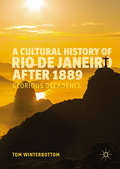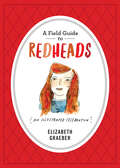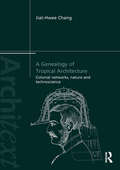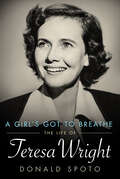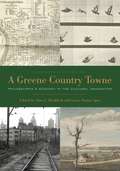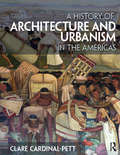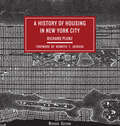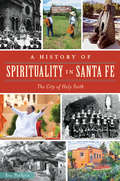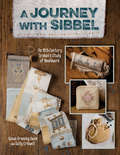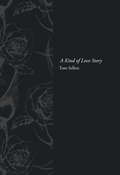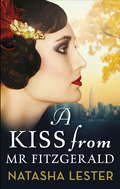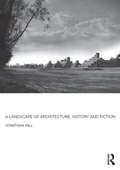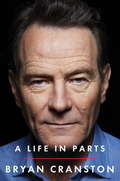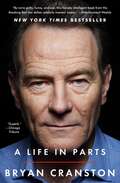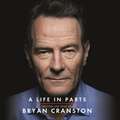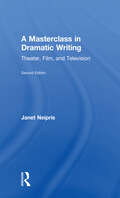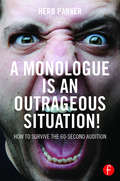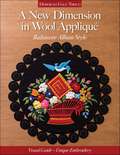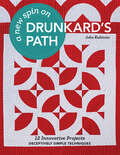- Table View
- List View
A Cultural History of Rio de Janeiro after 1889: Glorious Decadence
by Tom WinterbottomThis book studies architecture andliterature of Rio de Janeiro, the "Marvellous City," from the revolution of1889 to the Olympics of 2016, taking the reader on a journey through thehistory of the city. This study offers a wide-ranging and thought-provokinginsight that moves from ruins to Modernism, from the past to the future, fromfutebol to fiction, and from beach to favela, to uncover the surprisingfeature--decadence--at the heart of this unique and seemingly timeless urbanworld. An innovative and in-depth study of buildings, books, and characters inthe city's modern history, this fundamental new work sets the reader in theglorious world of Rio de Janeiro.
A Field Guide to Redheads: An Illustrated Celebration
by Elizabeth GraeberA unique and beautiful gift for the redhead in your life. A Field Guide to Redheads celebrates that rarest of creatures—people with red hair account for less than 2% of the population—in the most whimsical and irresistible way. Illustrated by Elizabeth Graeber, a redhead herself, this pretty little hardcover gift book presents a pantheon of 100 famous redheads, both real and fictional. Each page is a treat in how it surprises and pleases, acting as a field guide to every type of redhead, whether amber or auburn, ginger or strawberry: David Bowie and Rita Hayworth; Archie, Adele, and Axl Rose; Malcolm X, Sylvia Plath, and Yosemite Sam; Eric the Red, Louis C.K., Anne of Green Gables; Woody Woodpecker and Morris the Cat. Not to mention Napoleon, Shirley Temple, and those Raggedy Twins, Ann and Andy. If you are a redhead, celebrate your place among such distinguished company. If you love, or are loved by, a redhead, discover just how special the world is that you orbit.
A Field Guide to Redheads: An Illustrated Celebration
by Elizabeth GraeberA unique and beautiful gift for the redhead in your life.A Field Guide to Redheads celebrates that rarest of creatures—people with red hair account for less than 2% of the population—in the most whimsical and irresistible way. Illustrated by Elizabeth Graeber, a redhead herself, this pretty little hardcover gift book presents a pantheon of 100 famous redheads, both real and fictional. Each page is a treat in how it surprises and pleases, acting as a field guide to every type of redhead, whether amber or auburn, ginger or strawberry: David Bowie and Rita Hayworth; Archie, Adele, and Axl Rose; Malcolm X, Sylvia Plath, and Yosemite Sam; Eric the Red, Louis C.K., Anne of Green Gables; Woody Woodpecker and Morris the Cat. Not to mention Napoleon, Shirley Temple, and those Raggedy Twins, Ann and Andy. If you are a redhead, celebrate your place among such distinguished company. If you love, or are loved by, a redhead, discover just how special the world is that you orbit.
A Genealogy of Tropical Architecture: Colonial Networks, Nature and Technoscience (Architext)
by Jiat-Hwee ChangA Genealogy of Tropical Architecture traces the origins of tropical architecture to nineteenth century British colonial architectural knowledge and practices. It uncovers how systematic knowledge and practices on building and environmental technologies in the tropics were linked to military technologies, medical theories and sanitary practices, and were manifested in colonial building types such as military barracks, hospitals and housing. It also explores the various ways these colonial knowledge and practices shaped post-war techno scientific research and education in climatic design and modern tropical architecture. Drawing on the interdisciplinary scholarships on postcolonial studies, science studies, and environmental history, Jiat-Hwee Chang argues that tropical architecture was inextricably entangled with the socio-cultural constructions of tropical nature, and the politics of colonial governance and postcolonial development in the British colonial and post-colonial networks. By bringing to light new historical materials through formidable research and tracing the history of tropical architecture beyond what is widely considered today as its "founding moment" in the mid-twentieth century, this important and original book revises our understanding of colonial built environment. It also provides a new historical framework that significantly bears upon contemporary concerns with climatic design and sustainable architecture. This book is an essential resource for understanding tropical architecture and its various contemporary manifestations. Its in-depth discussion and path breaking insights will be invaluable to specialists, academics, students and practitioners.
A Girl's Got To Breathe: The Life of Teresa Wright (Hollywood Legends Series)
by Donald SpotoThe actress Teresa Wright (1918–2005) lived a rich, complex, magnificent life against the backdrop of Golden Age Hollywood, Broadway and television. There was no indication, from her astonishingly difficult—indeed, horrifying—childhood, of the success that would follow, nor of the universal acclaim and admiration that accompanied her everywhere. Her two marriages—to the writers Niven Busch (The Postman Always Rings Twice; Duel in the Sun) and Robert Anderson (Tea and Sympathy; I Never Sang for My Father)—provide a good deal of the drama, warmth, poignancy and heartbreak of her life story. “I never wanted to be a star,” she told the noted biographer Donald Spoto at dinner in 1978. “I wanted only to be an actress.” She began acting on the stage in summer stock and repertory at the age of eighteen. When Thornton Wilder and Jed Harris saw her in an ingénue role, she was chosen to understudy the part of Emily in the original production of Our Town (1938), which she then played in touring productions. Samuel Goldwyn saw her first starring role on Broadway—in the historic production of Life with Father—and at once he offered her a long contract. She was the only actress to be nominated for an Academy Award for her first three pictures (The Little Foxes; The Pride of the Yankees; and Mrs. Miniver), and she won for the third film. Movie fans and scholars to this day admire her performance in the classics Shadow of a Doubt and The Best Years of Our Lives. The circumstances of her tenure at Goldwyn, and the drama of her breaking that contract, forever changed the treatment of stars. Wright's family and heirs appointed Spoto as her authorized biographer and offered him exclusive access to her letters and papers. Major supporting players in this story include Robert Anderson, Alfred Hitchcock, William Wyler, Karl Malden, Elia Kazan, Jean Simmons, Dorothy McGuire, Bette Davis, George Cukor, Marlon Brando, George C. Scott, the artist Al Hirschfeld, Stella Adler, and more.
A Greene Country Towne: Philadelphia’s Ecology in the Cultural Imagination
by Alan C. Braddock Laura Turner IgoeAn unconventional history of Philadelphia that operates at the threshold of cultural and environmental studies, A Greene Country Towne expands the meaning of community beyond people to encompass nonhuman beings, things, and forces.By examining a diverse range of cultural acts and material objects created in Philadelphia—from Native American artifacts, early stoves, and literary works to public parks, photographs, and paintings—through the lens of new materialism, the essays in A Greene Country Towne ask us to consider an urban environmental history in which humans are not the only protagonists. This collection reimagines the city as a system of constantly evolving constituents and agencies that have interacted over time, a system powerfully captured by Philadelphia artists, writers, architects, and planners since the seventeenth century. In addition to the editors, contributors to this volume are Maria Farland, Nate Gabriel, Andrea L. M. Hansen, Scott Hicks, Michael Dean Mackintosh, Amy E. Menzer, Stephen Nepa, John Ott, Sue Ann Prince, and Mary I. Unger.
A Greene Country Towne: Philadelphia’s Ecology in the Cultural Imagination
by Alan C. Braddock Laura Turner IgoeAn unconventional history of Philadelphia that operates at the threshold of cultural and environmental studies, A Greene Country Towne expands the meaning of community beyond people to encompass nonhuman beings, things, and forces.By examining a diverse range of cultural acts and material objects created in Philadelphia—from Native American artifacts, early stoves, and literary works to public parks, photographs, and paintings—through the lens of new materialism, the essays in A Greene Country Towne ask us to consider an urban environmental history in which humans are not the only protagonists. This collection reimagines the city as a system of constantly evolving constituents and agencies that have interacted over time, a system powerfully captured by Philadelphia artists, writers, architects, and planners since the seventeenth century. In addition to the editors, contributors to this volume are Maria Farland, Nate Gabriel, Andrea L. M. Hansen, Scott Hicks, Michael Dean Mackintosh, Amy E. Menzer, Stephen Nepa, John Ott, Sue Ann Prince, and Mary I. Unger.
A History of Architecture and Urbanism in the Americas
by Clare Cardinal-PettA History of Architecture and Urbanism in the Americas is the first comprehensive survey to narrate the urbanization of the Western Hemisphere, from the Arctic Circle to Antarctica, making it a vital resource to help you understand the built environment in this part of the world. The book combines the latest scholarship about the indigenous past with an environmental history approach covering issues of climate, geology, and biology, so that you'll see the relationship between urban and rural in a new, more inclusive way. Author Clare Cardinal-Pett tells the story chronologically, from the earliest-known human migrations into the Americas to the 1930s to reveal information and insights that weave across time and place so that you can develop a complex and nuanced understanding of human-made landscape forms, patterns of urbanization, and associated building typologies. Each chapter addresses developments throughout the hemisphere and includes information from various disciplines, original artwork, and historical photographs of everyday life, which - along with numerous maps, diagrams, and traditional building photographs - will train your eye to see the built environment as you read about it.
A History of Golf in Georgia (Sports)
by John CompaniotteGolf first came to Georgia in the late eighteenth century when a group of avid golfers banded together to form a club in Savannah. By the end of the nineteenth century, when the game had become popular, the state developed courses from border to border. More than four hundred courses now dot the landscape of the Peach State. Georgia native and golfing icon Bobby Jones won four of golf's most coveted titles in 1930: the British Amateur, British Open, U.S. Open and U.S. Amateur. For one hundred years, the state has produced champion golfers at every level, hosted amateur and professional championships and provided support for the global sport. Author John Companiotte offers the compelling story of golf's rise and prosperity in Georgia.
A History of Housing in New York City
by Kenneth T. Jackson Richard PlunzSince its emergence in the mid-nineteenth century as the nation's "metropolis," New York has faced the most challenging housing problems of any American city, but it has also led the nation in innovation and reform. The horrors of the tenement were perfected in New York at the same time that the very rich were building palaces along Fifth Avenue; public housing for the poor originated in New York, as did government subsidies for middle-class housing.A standard in the field since its publication in 1992, A History of Housing in New York City traces New York's housing development from 1850 to the present in text and profuse illustrations. Richard Plunz explores the housing of all classes, with comparative discussion of the development of types ranging from the single-family house to the high-rise apartment tower. His analysis is placed within the context of the broader political and cultural development of New York City. This revised edition extends the scope of the book into the city's recent history, adding three decades to the study, covering the recent housing bubble crisis, the rebound and gentrification of the five boroughs, and the ecological issues facing the next generation of New Yorkers. More than 300 illustrations are integrated throughout the text, depicting housing plans, neighborhood changes, and city architecture over the past 130 years. This new edition also features a foreword by the distinguished urban historian Kenneth T. Jackson.
A History of Housing in New York City (Columbia History of Urban Life)
by Richard PlunzSince its emergence in the mid-nineteenth century as the nation's "metropolis," New York has faced the most challenging housing problems of any American city, but it has also led the nation in innovation and reform. The horrors of the tenement were perfected in New York at the same time that the very rich were building palaces along Fifth Avenue; public housing for the poor originated in New York, as did government subsidies for middle-class housing.A standard in the field since its publication in 1992, A History of Housing in New York City traces New York's housing development from 1850 to the present in text and profuse illustrations. Richard Plunz explores the housing of all classes, with comparative discussion of the development of types ranging from the single-family house to the high-rise apartment tower. His analysis is placed within the context of the broader political and cultural development of New York City. This revised edition extends the scope of the book into the city's recent history, adding three decades to the study, covering the recent housing bubble crisis, the rebound and gentrification of the five boroughs, and the ecological issues facing the next generation of New Yorkers. More than 300 illustrations are integrated throughout the text, depicting housing plans, neighborhood changes, and city architecture over the past 130 years. This new edition also features a foreword by the distinguished urban historian Kenneth T. Jackson.
A History of Japanese Theatre
by Jonah SalzJapan boasts one of the world's oldest, most vibrant and most influential performance traditions. This accessible and complete history provides a comprehensive overview of Japanese theatre and its continuing global influence. Written by eminent international scholars, it spans the full range of dance-theatre genres over the past fifteen hundred years, including noh theatre, bunraku puppet theatre, kabuki theatre, shingeki modern theatre, rakugo storytelling, vanguard butoh dance and media experimentation. The first part addresses traditional genres, their historical trajectories and performance conventions. Part II covers the spectrum of new genres since Meiji (1868–), and Parts III to VI provide discussions of playwriting, architecture, Shakespeare, and interculturalism, situating Japanese elements within their global theatrical context. Beautifully illustrated with photographs and prints, this history features interviews with key modern directors, an overview of historical scholarship in English and Japanese, and a timeline. A further reading list covers a range of multimedia resources to encourage further explorations.
A History of Spirituality in Santa Fe: The City of Holy Faith
by Ana PachecoShaped by early volcanic activity, the Sangre De Cristo and Jemez Mountain ranges surrounding Santa Fe create a uniquely spiritual landscape. Centuries ago, the Anasazi and their Pueblo Indian descendants believed the land was sacred and established communities in the area. In the early seventeenth century, the Spanish brought Catholicism to Santa Fe and christened it the City of Holy Faith. Other European faiths arrived in the mid-nineteenth century. By the twentieth century, religions from the East, along with New Thought and New Age practitioners, had established a foothold in the capital city. Sikhism, the fifth-largest religion in the world, was introduced to the western hemisphere from Santa Fe. The nature-based UDV religion of Brazil founded its first center in the United States in Santa Fe, which also includes the four major lineages of Tibetan Buddhism. Santa Fe city historian Ana Pacheco documents the rich religious and spiritual history of this high-mountain metaphysical community.
A Journey with Sibbel: An 18th-Century Orphan's Study of Needlework
by Susan Greening Davis Sally Criswell“Beautiful images of the needlework and patterns inspired by the sampler, along with wonderful vignettes of culture and history from the time period.” —Sassy Jacks Stitchery Authors Susan Greening Davis and Sally Criswell found Sibbel’s sampler in Belgium, fell in love with it and brought it to America. Through their research, they have opened a window for us to see what life for Sibbel was like growing up in the 1700s, learning needlework techniques and coming to love stitching.Within these pages is an interpretation of Sibbel’s young life in a Netherlands charity home. As Sibbel creates the motifs in her sampler and learns special joining stitches, you are invited to stitch along. What you will have created is a stunning showpiece. In the project pages, you can create many of the items Sibbel would have made, such as her leather pincushion or the gorgeous stitching weight used to hold her sampler in place.So collect your favorite stitching tools, find your most comfortable chair and take a journey with Sibbel.
A Kind of Love Story
by Tom SellersTom Sellers is a luminary of the British culinary scene. His Restaurant Story opened its doors in April 2013; its innovative literary-inspired menu, taking diners on 'a personal journey through food', has won him huge critical and public acclaim. Story was awarded its first Michelin star just five months after opening. This stunning book will be your chance to enter the visionary mind of one of the most original chefs of our time, and discover the truth behind the tales of his brilliant food.
A Kind of Love Story
by Tom SellersThe story behind life in a world-renown Michelin-starred restaurant.Tom Sellers is a luminary of the British culinary scene. His Restaurant Story opened its doors in April 2013; its innovative literary-inspired menu, taking diners on 'a personal journey through food', has won him huge critical and public acclaim. Story was awarded its first Michelin star just five months after opening. This stunning book will be your chance to enter the visionary mind of one of the most original chefs of our time, and discover the truth behind the tales of his brilliant food.
A Kiss From Mr Fitzgerald: A captivating love story set in 1920s New York, from the New York Times bestseller
by Natasha LesterFrom New York Times bestselling author of The French Photographer'A glamorous, transporting read' Woman's Weekly . . .IN 1920s NEW YORK, EVERYONE IS CHASING A DREAM . . .The Roaring 20s - a time for glamour, frivolity and freedom for women. But for Evie Lockhart, a small-town girl who is determined to become one of the first female doctors, it means turning her back on her family and the only life she's ever known.In a desperate attempt to support herself through Columbia University's medical school, Evie auditions for the infamous late-night Ziegfeld Follies on Broadway. But if she gets the part, what will it mean for her new relationship with Upper East Side banker Thomas Whitman - a man Evie thinks she could fall for, if only she lived a less scandalous life . . .Captivating and inspirational, A Kiss From Mr Fitzgerald is a love story starring a woman ahead of her time, set against the backdrop of Jazz Age New York. Perfect for fans of Lucinda Riley and Kate Furnivall.'If you're mad about the roaring twenties and all things Gatsby, this romance will have you enchanted' WOMAN'S DAYPRAISE FOR NATASHA LESTER:'A fantastically engrossing story. I love it' KELLY RIMMER'Intrigue, heartbreak... I cannot tell you how much I loved this book' RACHEL BURTON'A gorgeously rich and romantic novel' KATE FORSYTH'If you enjoy historical fiction (and even if you don't) you will love this book' SALLY HEPWORTH'Utterly compelling' GOOD READING
A Landscape of Architecture, History and Fiction
by Jonathan HillArchitecture can be analogous to a history, a fiction, and a landscape. We expect a history or a novel to be written in words, but they can also be cast in concrete or seeded in soil. The catalyst to this tradition was the simultaneous and interdependent emergence in the eighteenth century of new art forms: the picturesque landscape, the analytical history, and the English novel. Each of them instigated a creative and questioning response to empiricism’s detailed investigation of subjective experience and the natural world, and together they stimulated a design practice and lyrical environmentalism that profoundly influenced subsequent centuries. Associating the changing natural world with journeys in self-understanding, and the design process with a visual and spatial autobiography, this book describes journeys between London and the North Sea in successive centuries, analysing an enduring and evolving tradition from the picturesque and romanticism to modernism. Creative architects have often looked to the past to understand the present and imagine the future. Twenty-first-century architects need to appreciate the shock of the old as well as the shock of the new.
A Life in Parts
by Bryan Cranston'Bryan Cranston has created a cinematic record of how an actor shapes a career and an identity and a legacy all at the same time' Tom Hanks'A superb anecdotalist with an honest take on how he dealt with fame found later in life' SUNDAY TIMES CULTUREWith BREAKING BAD, Bryan Cranston created moments that had the world on the edge of their seats and coined catchphrases that became famous all over the globe. Now, at last, we can learn of the man behind one of TV's most successful programmes ever. Bryan Cranston's profile has skyrocketed, due to his portrayal of chemistry teacher turned drug manufacturer Walter White, for five seasons in the award-winning BREAKING BAD.For the first time readers can discover how he beat off competition from Matthew Broderick and Steve Zahn for the role, to stories about the cast and life after Walter. Told with honesty and intrigue this will be Bryan's first - and - definitive autobiography. It is the ultimate book for the fans of BREAKING BAD.
A Life in Parts
by Bryan Cranston<P>A poignant, intimate, funny, inspiring memoir--both a coming-of-age story and a meditation on creativity, devotion, and craft--from Bryan Cranston, beloved and acclaimed star of one of history's most successful TV shows, Breaking Bad.Bryan Cranston landed his first role at seven, when his father cast him in a United Way commercial. Acting was clearly the boy's destiny, until one day his father disappeared. Destiny suddenly took a backseat to survival. <P>Now, in his riveting memoir, Cranston maps his zigzag journey from abandoned son to beloved star by recalling the many odd parts he's played in real life--paperboy, farmhand, security guard, dating consultant, murder suspect, dock loader, lover, husband, father. Cranston also chronicles his evolution on camera, from soap opera player trying to master the rules of show business to legendary character actor turning in classic performances as Seinfeld dentist Tim Whatley, "a sadist with newer magazines," and Malcolm in the Middle dad Hal Wilkerson, a lovable bumbler in tighty-whities. He also gives an inspiring account of how he prepared, physically and mentally, for the challenging role of President Lyndon Johnson, a tour de force that won him a Tony to go along with his four Emmys. <P>Of course, Cranston dives deep into the grittiest details of his greatest role, explaining how he searched inward for the personal darkness that would help him create one of the most memorable performances ever captured on screen: Walter White, chemistry teacher turned drug kingpin. Discussing his life as few men do, describing his art as few actors can, Cranston has much to say about creativity, devotion, and craft, as well as innate talent and its challenges and benefits and proper maintenance. But ultimately A Life in Parts is a story about the joy, the necessity, and the transformative power of simple hard work. <P><b>A New York Times Bestseller</b>
A Life in Parts
by Bryan Cranston'Bryan Cranston has created a cinematic record of how an actor shapes a career and an identity and a legacy all at the same time' Tom Hanks'A superb anecdotalist with an honest take on how he dealt with fame found later in life' SUNDAY TIMES CULTUREA poignant, intimate, funny, inspiring memoir - both a coming-of-age story and a meditation on creativity, devotion, and craft - from Bryan Cranston, beloved and acclaimed star of one of history's most successful TV shows, Breaking Bad.Bryan Cranston landed his first role at seven, when his father cast him in a United Way commercial. Acting was clearly the boy's destiny, until one day his father disappeared. Destiny suddenly took a backseat to survival.Now, in his riveting memoir, Cranston maps his zigzag journey from abandoned son to beloved star by recalling the many odd parts he's played in real life - paperboy, farmhand, security guard, dating consultant, murder suspect, dock loader, lover, husband, father. Cranston also chronicles his evolution on camera, from soap opera player trying to master the rules of show business to legendary character actor turning in classic performances as Seinfeld dentist Tim Whatley, "a sadist with newer magazines," and Malcolm in the Middle dad Hal Wilkerson, a lovable bumbler in tighty-whities. He also gives an inspiring account of how he prepared, physically and mentally, for the challenging role of President Lyndon Johnson, a tour de force that won him a Tony to go along with his four Emmys.Of course, Cranston dives deep into the grittiest details of his greatest role, explaining how he searched inward for the personal darkness that would help him create one of the most memorable performances ever captured on screen: Walter White, chemistry teacher turned drug kingpin.Discussing his life as few men do, describing his art as few actors can, Cranston has much to say about creativity, devotion, and craft, as well as innate talent and its challenges and benefits and proper maintenance. But ultimately A Life in Parts is a story about the joy, the necessity, and the transformative power of simple hard work.(p) 2016 Simon & Schuster
A Masterclass in Dramatic Writing: Theater, Film, and Television
by Janet NeiprisA Masterclass in Dramatic Writing is an essential tool for professional teachers in academic programs training successful Playwrights, Screenwriters, and TV writers, as well as anyone who wants to write a completed dramatic script. You can become a successful dramatic writer within a group or by yourself. This focused and engaging book is organized as a one-semester course. The chapters guide the writer week-by-week and step-by-step resulting in the completion of a first draft and a rewrite of an original script. The fourteen chapters are each accompanied by Weekly Exercises and progressive Assignments. In this expanded and updated edition, Neipris integrates her widely used To Be A Playwright, into a master class for playwrights, screenwriters and TV writers. New Chapters include: THE MORAL RESPONSIBILITY OF THE WRITER ONE WRITER’S LIFE BEGINNINGS- WHERE IDEAS ORIGINATE COMEDY CHECKPOINTS ADAPTATION –FILM, THEATER, AND TELEVISION PUTTING IT TOGETHER -- CONSTRUCTING A FULL LENGTH SCRIPT LESSONS FROM MASTER TEACHERS AND STUDENTS Janet’s legacy as an educator, mentor, and artists is legendary. This book is a gift to the profession and the art. Brandon Jacobs-Jenkins
A Monologue is an Outrageous Situation!: How to Survive the 60-Second Audition
by Herb ParkerA Monologue is an Outrageous Situation! How to Survive the 60-Second Audition explains how to successfully tackle the "cattle call" acting audition with a sixty-second monologue. Through Q&As, tips, director’s notes, and a glossary full of outrageous actions meant to inspire the actor into truly connecting with the piece, this book shows actors where and how to find a monologue, edit it, and give the best audition possible.
A New Dimension in Wool Appliqué: Baltimore Album Style
by Deborah Gale TiricoGive Baltimore Album designs dimension with felted wool Honor the legacy and history of Baltimore Album blocks with Deborah Tirico's distinctive appliqué style! With luscious felted wool and textures as rich as the history they depict, well-known motifs are the basis for 9 appliqué projects from table rugs and pillows to pincushions. No-fray wool appliqué is a perfect take-along project for leisurely stitching with no turned edges. Perfect techniques such as trapunto, layering, stuffing, needle-slanting, and beading with this complete visual guide, which also includes full-size templates and tips for personalizing Baltimore classics. - No turned edges! Easy-to-learn, dimensional wool appliqué—classic Baltimore Album motifs - Join the slow-sewing movement with 9 small appliqué and embroidery projects like pillows and table rugs - Learn Deborah Tirico's dimensional felted-wool techniques such as beading, trapunto, layering, and needle-slanting
A New Spin on Drunkard's Path: 12 Innovative Projects—Deceptively Simple Techniques
by John Kubiniec“John Kubiniec’s aim is to take the fear and mystery out of creating with curves, and has put together enough intriguing designs to tempt any quilter.” —Down Under QuiltsShake up the Drunkard’s Path block with quilting teacher John Kubiniec. Go beyond the basics of curved piecing with twelve innovative projects based on a classic pattern. Discover how sewing pre-pieced units like rail fences, half-square triangles, and sixteen-patches can completely change up the Drunkard’s Path look. Take it a step further with creative sashings and add-ons to alter the finished layout. The end result looks complex but is actually easy to sew!“The instructions are foolproof. It is amazing the variety you can create when you start to experiment—these twelve designs are all different and should keep any quilter happy for months. This is a book to ignite your creative imagination.” —yarnsandfabrics.co.uk“Many quilters avoid curved piecing, but the projects in this book will make you want to try—and buy in! The quilts look very complicated, but John breaks down the steps to make it easy, and painless.” —Quilter’s Connection“A new take on curved piecing. Go beyond the basics with twelve innovative projects based on a classic pattern.” —Today’s Quilter
